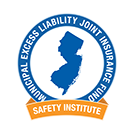There are many risk management issues associated with driving. The MEL Safety Institute has several bulletins and best practices guides for different kinds of vehicles including low-speed vehicles, passenger vans, snow and leaf collection trucks, and CDL and Non-CDL vehicles.
The information on this page is more general in nature for everyday safety practices when driving.
Automated Driving
The auto industry’s response to the increase in fatal accidents due distractions is to develop more comprehensive driver alerts that will ultimately lead to semi-automated and automated vehicles. While this technology has the potential to substantially reduce accidents, it might also increase the liability of public entities. The problem is that when an accident occurs, it will usually involve a products liability suit against the vehicle manufacturer and subrogation against public entities alleging road defects or design contributed to the cause. Even where the public entity is successful defending the action under various immunity statutes, the legal costs will be substantial.
Resources
This section includes articles discussing the evolution of semi-automated and automated driving.
Defensive Driving
The Defensive Driving New Jersey State 4-Hour Course is provided by the National Safety Council and is eligible for insurance premium discounts and point reductions if accepted by your insurance provider.
This course is only available for MEL affiliated JIF members employees.
Resources
Distracted Driving
Distracted driving has been identified as the primary cause in the increase of motor vehicle accidents in recent years. In 80% of all accidents, the driver was looking away from the road or doing something else at least three seconds prior to the accident. Research has determined that at any time, 11% of all motorists are talking on cell phones. The use of a cell phone, even a hands free phone, quadruples the risk of an accident.
The mind is similar to a computer and can process only so much data at one time. Even if you are not distracted, your mind can not process all of the information it receives while driving. Talking on a cell phone or focusing on an application puts the brain into information overload making it impossible to safely operate a vehicle.
For example, research shows that a motorist on a cell phone tends to look only straight ahead and stops scanning the road. This results in the loss of peripheral vision, and the driver often fails to see things coming in from the side such as a pedestrian or another car. Texting is even more dangerous because motorists literally take their eyes off the road and their hands off of the steering wheel.
Cell phones and other electronic devices are also a problem for pedestrians. A Los Angeles study found that pedestrians talking on cell phones are less likely to look for traffic and take longer to get to the opposite side when crossing the street.
New Jersey law bans the use of a handheld cellular phone while driving. Drivers who talk or text on a handheld cell phone while driving face a fine.
Resources
Driving Strategies
With over 230 million cars on the road, today’s motorist is confronted with many challenges. Urban roads are jammed and our highways carry more traffic than they we designed to handle. Over the last 35 years, the number of drivers has increased 65%, but over the same time, we have added only 6% to our highway system.
The video Surviving Urban Driving discusses basic driving strategies for areas such as New Jersey which has more cars per road mile than any other state. Any governmental entity may download and use this video.
- Maintain Proper Following Distance – Urban driving is based on the principle that if you are aware of a problem soon enough, you can control it. The biggest mistake urban drivers make is following the car ahead too closely. Your ability to avoid an accident is directly related to the distance between you and the vehicles in front and around you.What is the proper following distance? Most drivers think of car lengths, but it is almost impossible to estimate distance while driving. An easy way to determine following distance to determine following time in seconds. The minimum following time when driving a car is two seconds. When the car ahead passes a fixed object, such as a pole or a sign, count two seconds to yourself – one thousand one…one thousand two. Your vehicle should not reach the pole or sign until the end of the two-second period. By counting seconds, following distance automatically increases as speed increases. Two seconds is the minimum. You want to be far enough back so that you can comfortably take your eyes off of the car head. For most drivers, that is about three or four seconds.
- Make effective use of your eyes – Research shows that you only see clearly in the central 3 degrees of your line of sight. Everything to the side is blurred. At 100 feet distance, clear vision is only a 5-foot diameter circle. At 300 feet, clear vision is only a 15-foot diameter circle. So to make effective use of your eyes, you must scan from sidewalk to sidewalk for a block or two ahead and in the rear view mirrors.On expressways, look as far down the road as possible. By occasionally scanning a tenth of a mile ahead or more, you can often see what will cause the vehicles ahead to react, even before they do. This is why following distance is so important. You cannot make effective use of your eyes if you are too close. And you cannot make effective use of your eyes if you have a cell phone held to your ear, or are drinking coffee, or are engaged in a debate with passengers.
- Control dangerous situations – In most situations, the most effective way to control hazards is to slow down and cover the brake. When we say cover the brake, we mean take your foot off the accelerator and rest it lightly on the brake pedal. You don’t have to depress he brake very hard. Covering the brake does three things:
-
- Your vehicle will begin to gradually slow down
-
- Your reaction time will be reduced because your foot is already on the brake pedal
-
- Resting your foot on the brake pedal will light your brake lights and communicate with motorists behind you that you might have to stop
Most importantly, you must have a positive towards your responsibilities. While you can’t always control the actions of others, you can learn to control your own emotions and you can take steps to keep yourself mentally alert. Avoid the temptation to take short cuts or push yourself and your vehicle to the limit.
Click to view a video on Driving During Emergencies and Natural Disasters.
Emergency Vehicles
Please visit the MSI website for specific bulletins and information about emergency vehicles like ambulances, fire trucks and police vehicles.
Resources
Municipal Excess Liability Joint Insurance Fund
9 Campus Drive, Suite 216,
Parsippany, NJ 07054
Phone: 201.881.7632
Fax: 201.881.7633
mel@permainc.com
© Copyright 2025 | Municipal Excess Liability Joint Insurance Fund | All rights reserved


